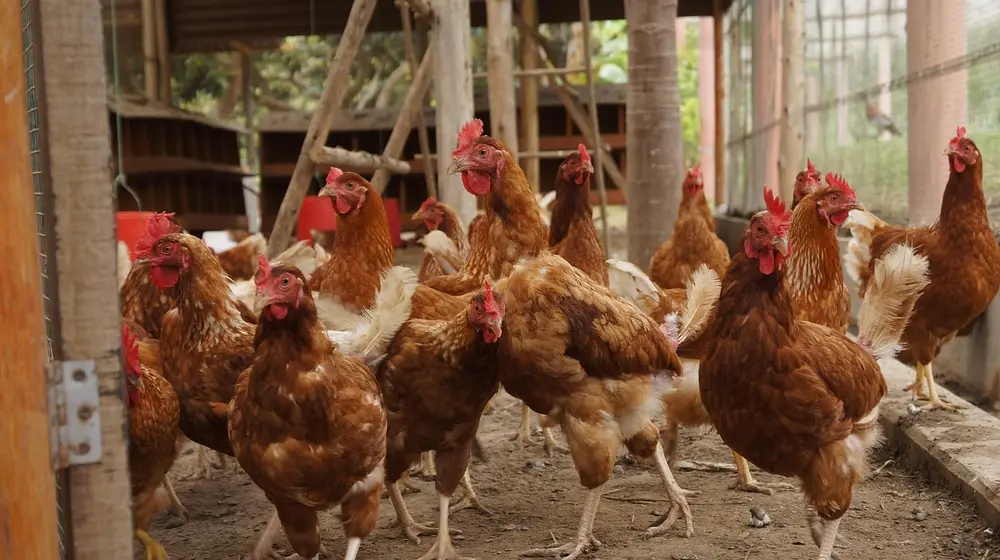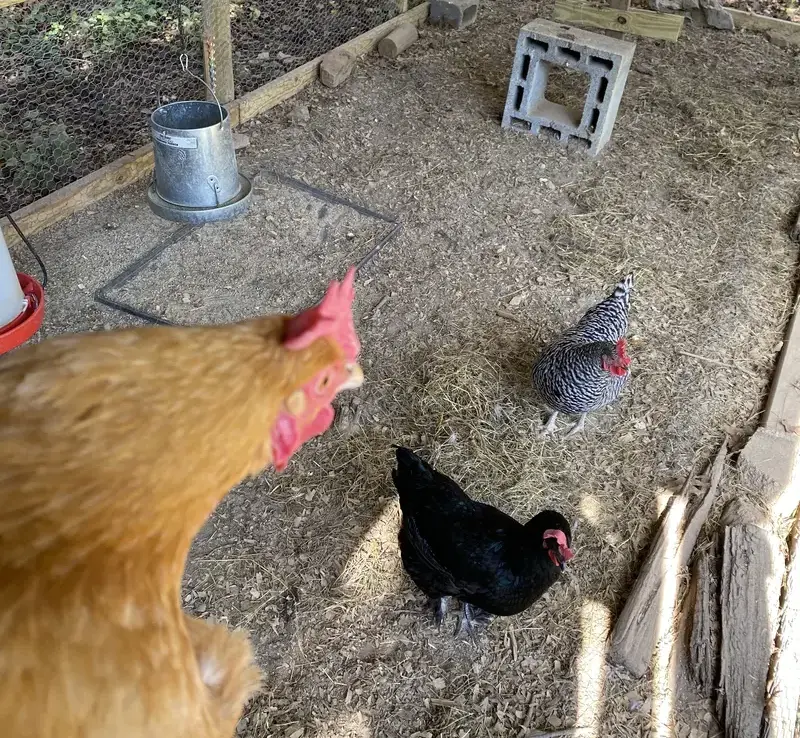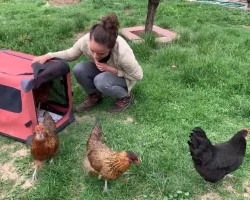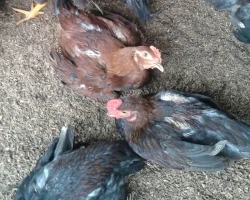As a poultry specialist and hobby chicken keeper, I quickly learned that the chicken coop size makes a huge difference. Not just for the comfort of the flock but also for egg production. Over the years, I’ve helped many hobby chicken keepers design or choose their chicken coops, and my advice is always the same: don’t underestimate how much space your chickens need.
In this article, I’ll walk you through how to figure out the right chicken coop size for your backyard flock. We’ll look at the key factors that influence coop size, common mistakes people make, and some practical tips to help you make the best size decision for you and your flock.
Why chicken Coop Size Matters
Ask yourself: why does your own house’s size matter? Your chickens often feel the same way. A chicken coop is where your chickens rest, lay eggs, and retreat from bad weather or predators. When a coop is too small, chickens can become stressed, aggressive, or unhealthy.
Here are a few issues that come from cramped housing:
- Pecking and bullying: Overcrowding often leads to feather pecking and fights.
- Dirty bedding: More birds results in more droppings, and dirty bedding or wet litter
- Poor air quality: Too many birds in a small space means lots of ammonia buildup from droppings.
- Higher risk of disease: Close contact increases the spread of parasites and illnesses.
- Stress and fewer eggs: Chickens under stress lay fewer eggs and may stop altogether.
On the positive side, a properly sized coop supports good health, makes cleaning easier, and helps your hens feel comfortable and produce lots of eggs.

The General Space Guidelines
There’s no one-size-fits-all answer, but most experts (myself included) agree that different chicken breeds have different space needs. Normal chicken breeds like Leghorns weigh about 4 to 6 pounds (1,8 to 2,7 kg) and need more space than bantams, which weigh about 2 pounds (0,9 kg). Breeds like Orpingtons are considered large because they weigh about 7-10 pounds (3,2 to 4,5 kg). These different chicken breeds and sizes have different space requirements:
- Standard-sized chickens: 3-4 square feet (0.28–0.37 m²) per hen inside the coop.
- Large chickens: 4-5 square feet (0.37-0.47 m²) per hen inside the coop
- Bantams (smaller breeds): 2-3 square feet (0.18–0.28 m²) per hen inside the coop.
- Run or outdoor space: 10-12 square feet (0.9–1.1 m²) per hen, at minimum.
So if you plan to keep six standard-sized hens, you should aim for a coop that’s at least 18-24 square feet (1.8–2.4 m²) inside, plus a run of around 60-72 square feet (5.5–6.6 m²).
These numbers are minima, but the bigger the better!
However, the guidelines change if you’re planning a much larger setup, such as a coop for over 100 hens or even a professional farm with thousands of hens. It may sound counterintuitive, but the bigger the chicken house, the less space is required per hen. Since the overall area is already so large, the hens still have plenty of room to move around. In commercial farming, the space requirements for laying hens are generally much smaller than in backyard flocks.
Legal Space Guidelines for Laying Hen Farms
Space requirements for laying hens are different in every country. In the US, legal space requirements for laying hens vary by state and sometimes by county. There are no federal laws mandating specific space requirements for laying hens, but many states have passed laws or regulations addressing this issue.
For example, legal space requirements for laying hens stated in the state of Colorado (source Cornell University) are:
On and after January 1, 2025, a farm owner or operator shall not knowingly confine an egg-laying hen in an enclosure that is less than:
- 1 square foot of usable floor space per egg-laying hen in a cage-free housing system that provides egg-laying hens with unfettered access to vertical space, such as a multi-tiered aviary or a partially slatted system; or
- 1.5 square feet of usable floor space per egg-laying hen in a cage-free housing system that does NOT provide egg-laying hens with unfettered access to vertical space
Coop Size Depends on More Than Just Numbers
While those guidelines are a solid starting point, the right coop size for your flock depends on several other factors:
1. Breed of Chickens
Some breeds are more active or larger than others. For example:
- Orpingtons, Brahmas, Jersey Giants: These big breeds need extra room inside.
- Leghorns, Anconas, other flighty breeds: They love to move around and benefit from extra run space.
- Bantams: Since these are miniature chickens that weigh only about 2 pounds (about 1 kg), you can fit more into the same space. They’re also agile and enjoy perches and vertical space.
My advice: if you’re mixing breeds, size the coop for the largest and most active ones.

2. Climate
The weather in your area plays a role. In warm climates, chickens spend more time outdoors, so indoor space matters a bit less. In colder or wetter climates, chickens spend more time inside the coop, so you’ll need to allow more room.
I live in an area with chilly winters, so I always recommend building on the generous side. You’ll thank yourself on those days when your hens don’t want to step foot in the snow.
3. Coop Style
Different coop designs offer different amounts of usable space. For example:
- Walk-in coops: These usually have more vertical space and feel more open.
- A-frame or tractor coops: Compact and mobile, but often on the smaller side.
- Raised coops with an under-run: A clever design that doubles outdoor space without taking up extra yard area.
The key is to think about how much of the coop is truly usable for the chickens. A sloped roof that cuts off headroom or awkward corners that can’t be used for roosts don’t really count.
4. Your Management Style
Ask yourself a few questions:
- Will your flock free-range daily (outside of the run)? Then you can get away with a smaller run.
- Will they be confined most of the time? Then the coop and run should be more generous.
- Do you want room to expand the flock later? If so, build bigger from the start.
- Don’t like cleaning? It might be smart to go for a bigger coop and run. Buildup of droppings will take longer, and you might get away with less cleaning.
Many chicken keepers tell me they wish they had started with a bigger coop. Chickens are surprisingly addictive pets, and fresh eggs are irresistible… I’ve lost count of how many times I’ve heard, “we’re just adding a few more hens.”

How to Calculate the Size You Need
Let’s run through a quick example. Suppose you’re planning for 8 standard hens:
- Indoor coop: 8 hens × 4 square feet (0.37 m²) = 32 square feet (3 m²)
- Outdoor run: 8 hens × 12 square feet (1.1 m²) = 96 square feet (8.9 m²)
That means you’ll need a coop about the size of a small garden shed, plus a decent run.
Common Mistakes When Choosing Coop Size
I’ve seen a lot of new chicken keepers make the same mistakes. Here are a few to watch out for:
- Believing the marketing on prefab coops: Many store-bought coops claim to hold 6–10 chickens, but in reality, they’re only suitable for 2–3 hens. Always check the square footage, not the claims on the box.
- Not factoring in roost and nesting space: Chickens need both floor space and perch space. A cramped roost can cause squabbles.
- Forgetting about maintenance: A tiny coop is much harder to clean, and you might need to clean more often to keep it comfortable for your hens.
- Not planning for the future: If you think you’ll ever want more chickens, build bigger now. It’s cheaper than upgrading later.
Tips to Make the Most of Coop Space

Even if your backyard is small, you can make a modest coop feel roomy:
- Add vertical space: Chickens love to perch. Multiple roosting bars at different heights make use of headroom. Also, raised coops with an under-run are available that take up less space in your yard.
- Build a secure run: A predator-proof run means you can give them extra outdoor time without worrying.
- Use movable fencing: Portable chicken netting can expand their range during the day.
- Deep litter method: In a larger coop, this bedding system helps control odor and reduces cleaning.
- Covered run: Adding a roof to the run keeps it dry, which makes it usable year-round.
- Free-range your hens: Allow them to go outside the run. It can make up for a little less chicken run space, and your hens will love it!
So, What’s the “Right” Coop Size?
If you came here hoping for a single magic number, I might disappoint you. The truth is, the right coop size depends on your flock, your space, and your lifestyle.
But here’s my simple rule: Give your chickens as much space as you reasonably can. They’ll be healthier, easier to manage, and more fun to keep. And you’ll avoid headaches like aggression, odor, and endless cleaning.
If you’re still unsure, I suggest starting with the guidelines I mentioned and then adding a little buffer. It’s always better to have too much space than too little.
Final Thoughts
Choosing the right chicken coop size is one of the most important decisions you’ll make as a backyard chicken keeper. Get it right, and your flock will thrive. Get it wrong, and you may be dealing with stressed birds, extra work, and a coop upgrade sooner than you’d like.
My advice, as someone who has kept chickens for years: plan generously, think about the future, and don’t rely on the numbers you see in glossy ads for prefab coops. Measure out the space, picture your flock moving around inside, and remember that happy chickens lay more eggs.
So, before you bring home your first hens, take some time to size up your coop plans. Your chickens and your future self will thank you.





